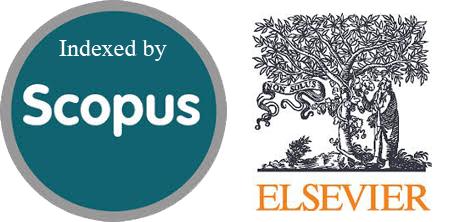Incidence and Perinatal Outcomes of Twin Pregnancy in Tertiary Healthcare Facility, Odisha, India
DOI:
https://doi.org/10.54133/ajms.v5i1S.302Keywords:
Fetus, Pregnancy, Perinatal outcomes, Twin pregnancyAbstract
Background: Assisted reproductive technology has resulted in a progressive rise in the incidence of twin pregnancies, which affect both mother and child in terms of antepartum complications. Objective: To assess the perinatal outcomes of twin pregnancies and the influence of chorionicity on them in a tertiary healthcare facility. Methods: It is a hospital-based cross-sectional study that was carried out in the Obstetrics and Gynecology Department of S.C.B. Medical College Hospital, Cuttack, during the period from 2013 to 2015. All mothers having twin pregnancies (with 28 weeks of completed gestation) admitted to the antenatal (ANC) ward and labor room during this period were taken as a study group, and written informed consent was taken after explaining the details of the study. Results: A total of 150 cases are identified; among them, 98 cases (65.33%) are dichorionic diamniotic, 50 cases (33.33%) are monochorionic diamniotic, and 2 cases (1.33%) are monochorionic and monoamniotic pregnancies. The majority (66%) of the twin pregnancies were between 35-38 wks of gestational age at the onset of labor. It is also observed that macerated births, stillbirths, and neonatal deaths are higher in mono-chorionic twins as compared to dichorionic twins. Conclusions: Twin pregnancies carry a greater risk of adverse outcomes, especially perinatal mortality and neonatal morbidity, in monochorionic twins than dichorionic twins. Good antenatal care, early diagnosis of chorionicity, and antepartum assessment of placentation will prevent mortality and morbidity.
Downloads
References
Zhou S, Yang Y, Zhang X, Mu X, Quan Q, Zhong Q, et al. Perinatal outcomes of twin pregnancies with preterm premature rupture of the membranes at 24-34 weeks' gestation. Sci Rep. 2021;11(1):23419. doi: 10.1038/s41598-021-02884-x. DOI: https://doi.org/10.1038/s41598-021-02884-x
Norwitz ER, Edusa V, Park JS, (Eds.), Maternal physiology and complications of multiple pregnancy, In: Seminars in Perinatology, WB Saunders; 2005, pp. 338-348. DOI: https://doi.org/10.1053/j.semperi.2005.08.002
Smits J, Monden C. Twinning across the Developing World. PLoS One. 2011;6(9):e25239. doi: 10.1371/journal.pone.0025239. DOI: https://doi.org/10.1371/journal.pone.0025239
Rizwan N, Abbasi RM, Mughal R. Maternal morbidity and perinatal outcome with twin pregnancy. J Ayub Med Coll Abbottabad. 2010;22(2):105-107. PMID: 21702280.
ERIC-ED472567- Births: Final Data for 2001., National Vital Statistics Reports, 2002-Dec-18. [cited 2022 Apr 20]. Available from: https://eric.ed.gov/?id=ED472567
Sutcliffe AG, Derom C. Follow-up of twins: Health, behavior, speech, language outcomes and implications for parents. Early Hum Develop. 2006;82(6):379-386. doi: 10.1016/j.earlhumdev.2006.03.007. DOI: https://doi.org/10.1016/j.earlhumdev.2006.03.007
Elliott JP, (Ed.), High-order multiple gestations, In: Seminars in Perinatology, WB Saunders; 2005, pp. 305-311. DOI: https://doi.org/10.1053/j.semperi.2005.08.001
Doyle P. The outcome of multiple pregnancy. Human Reprod. 1996;11(suppl. 4):110-120. doi: 10.1093/humrep/11.suppl_4.110. DOI: https://doi.org/10.1093/humrep/11.suppl_4.110
Bergh T, Ericson A, Hillensjö T, Nygren KG, Wennerholm UB. Deliveries and children born after in-vitro fertilization in Sweden 1982–95: a retrospective cohort study. Lancet. 1999;354(9190):1579-1585. doi: 10.1016/S0140-6736(99)04345-7. DOI: https://doi.org/10.1016/S0140-6736(99)04345-7
Upreti P. Twin pregnancies: incidence and outcomes in a tertiary health centre of Uttarakhand, India. Int J Reprod Contracept Obstet Gynecol. 2018;7(9):3520-3526. doi: 10.18203/2320-1770.ijrcog20183375. DOI: https://doi.org/10.18203/2320-1770.ijrcog20183375
Cheung YB, Yip P, Karlberg J. Mortality of twins and singletons by gestational age: a varying-coefficient approach. Am J Epidemiol. 2000;152(12):1107-1116. doi: 10.1093/aje/152.12.1107. DOI: https://doi.org/10.1093/aje/152.12.1107
Arias F, Bhide AG, Arulkumaran S, Damania K, Daftary SN, (eds.), Practical Guide to High Risk Pregnancy and Delivery, Elsevier Health Sciences; 2008.
Pandole A, Swamy MS, Sardeshpande N, Mishra A, Kore SJ, Ambiye VR. Perinatal mortality in twin pregnancy: A retrospective analysis. J Obstet Gynecol Ind. 2003;53(2):138-139.
Hack KE, Derks JB, Elias SG, Franx A, Roos EJ, Voerman SK, et al. Increased perinatal mortality and morbidity in monochorionic versus dichorionic twin pregnancies: clinical implications of a large Dutch cohort study. Br J Obstet Gynecol. 2008;115(1):58-67. doi: 10.1111/j.1471-0528.2007.01556.x. DOI: https://doi.org/10.1111/j.1471-0528.2007.01556.x
Blondel B, Kogan MD, Alexander GR, Dattani N, Kramer MS, Macfarlane A, et al. The impact of the increasing number of multiple births on the rates of preterm birth and low birthweight: an international study. Am J Public Health. 2002;92(8):1323-1330. doi: 10.2105/ajph.92.8.1323. DOI: https://doi.org/10.2105/AJPH.92.8.1323
Divon MY, Marin MJ, Pollack RN, Katz NT, Henderson C, Aboulafia Y, et al. Twin gestation: fetal presentation as a function of gestational age. Am J Obstet Gynecol. 1993;168(5):1500-1502. doi: 10.1016/s0002-9378(11)90789-3. DOI: https://doi.org/10.1016/S0002-9378(11)90789-3

Downloads
Published
How to Cite
Issue
Section
License
Copyright (c) 2023 Al-Rafidain Journal of Medical Sciences ( ISSN 2789-3219 )

This work is licensed under a Creative Commons Attribution-NonCommercial-ShareAlike 4.0 International License.
Published by Al-Rafidain University College. This is an open access journal issued under the CC BY-NC-SA 4.0 license (https://creativecommons.org/licenses/by-nc-sa/4.0/).











